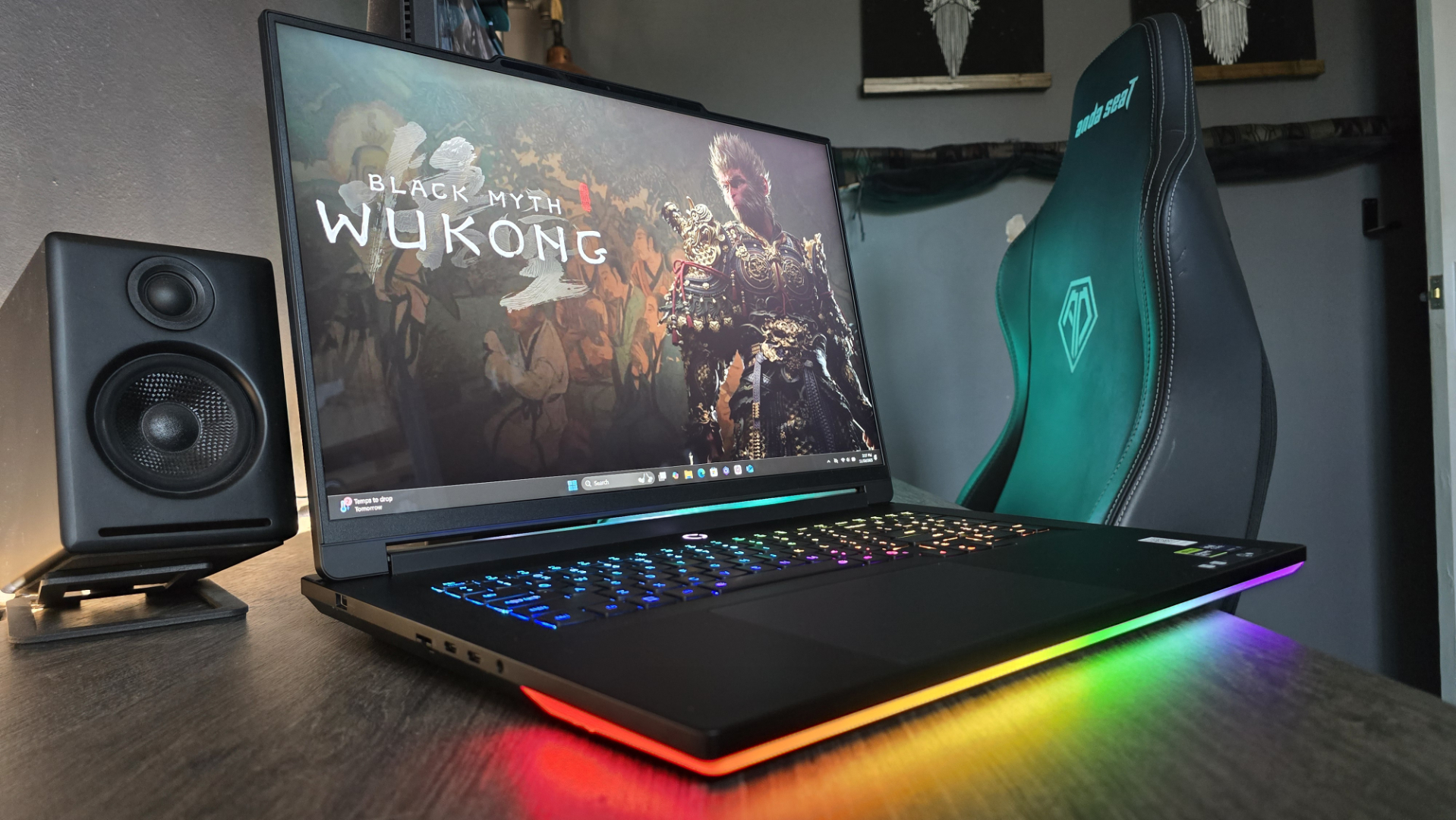The making of a mouse
How Logitech designed the G900 mouse over the course of three years.
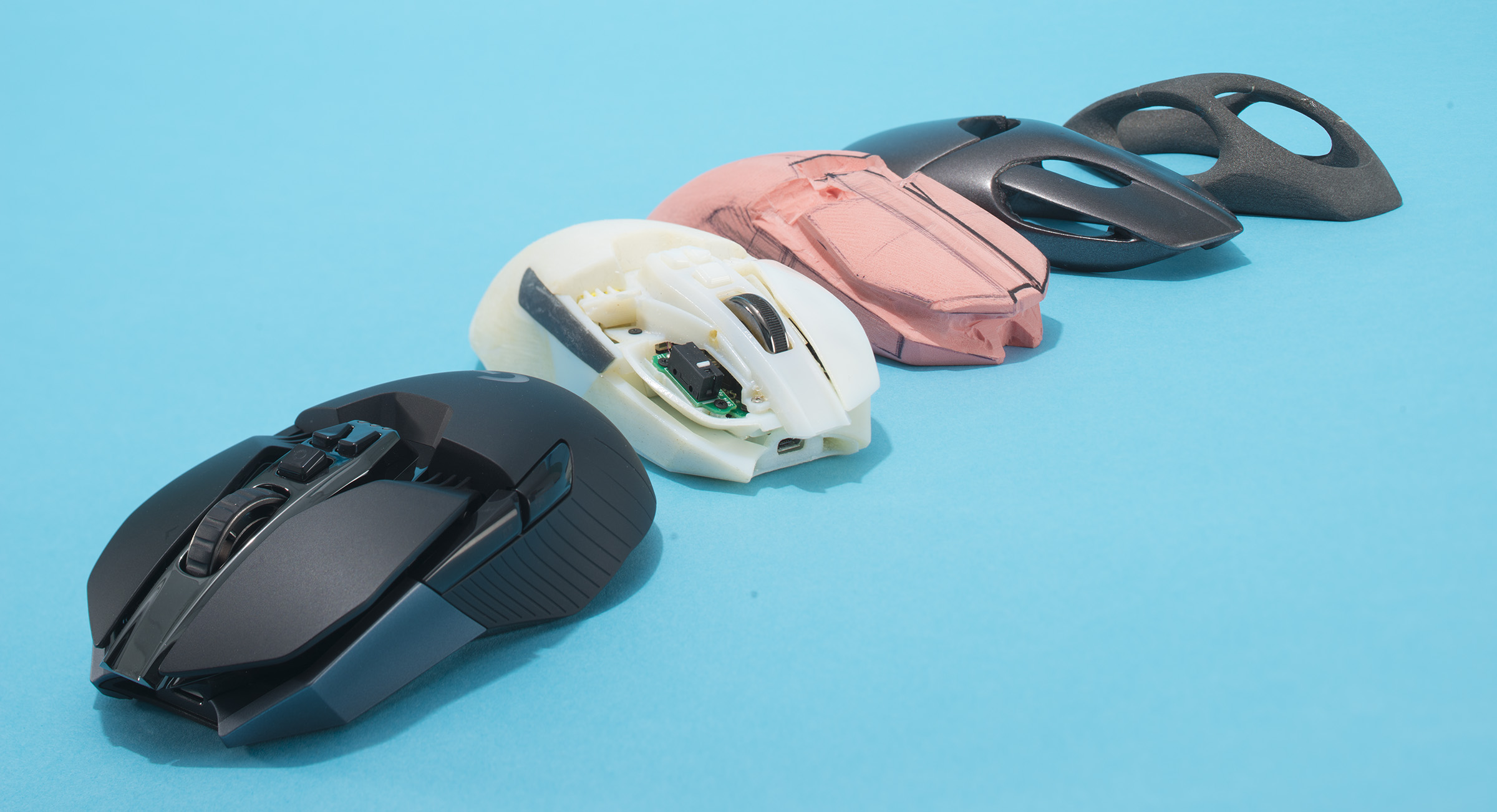
This article was originally published in PC Gamer Magazine #280.
Chris Pate isn’t a designer or an engineer, but after 17 years at Logitech he knows more about making them than anyone I’ve met. When he talks about the mice he’s worked on as a product manager, he relates back to his days playing Quake III for hours on end. He demurs over his technical knowledge, but he knows when a mouse feels right. So when Pate tells me his goal for the G900 Chaos Spectrum, a mouse three years in the making, is to “bust all the myths about wireless, to the point where there was no reason not to use a wireless mouse,” I believe him.
“The very basic starting point was I wanted to make a wireless mouse that was professional grade,” Pate said when he first showed me a prototype of the G900. “The highest echelon of gamers that I can think of, that would be concerned about performance, would be Counter-Strike pros. So at a very very high level, professional grade wireless gaming was the original target.”
If a mouse’s performance could pass muster with pros, Pate reasoned, it’s good enough for the rest of us.That ambition ultimately shaped the rest of the G900’s set of features: a lightweight body, ambidextrous design, and new switches designed to click faster and more reliably. Putting all of those features into one mouse took three years of work from a global team spread across California, Switzerland, Ireland and China. I talked to Logitech’s designers and engineers to learn about each step of how a gaming mouse is made.
In the beginning
A product like the G900 never springs from the mind of a designer fully formed. Even something that seems like a simple starting point—the shape of the mouse—took months and months of iteration to settle on.
“We probably in general make about 30 or 40 different models on the way from concept to release,” said Pate. “With this one it was hundreds.”
The designers start by drawing mockups of different shapes for the mouse, some similar to previous models, some radically different. At this point, Logitech hadn’t yet decided to make the G900 an ambidextrous design. Keeping weight down was a goal from the beginning.
Keep up to date with the most important stories and the best deals, as picked by the PC Gamer team.
“We do spend a lot of time with drawings, a lot of time deciding if we can use this material, this molding process, where can we cut stuff out,” Pate said. “Where does a person not touch a thing, so can we save weight by not having material there. Then we start with the foam modeling process. The foam is hard foam blocks that we get formed out on a bandsaw and filed down with hand files. The designer works on many different iterations for a few weeks to come up with something that fits comfortably in a wide range of people’s hands.”
The designers refine their foam models with in-office testing, shaving off a millimeter of surface here, adding more support there, to comfortably fit as many hands as possible. According to Pate, the majority of gamers rank comfort as their first priority when it comes to buying a mouse.
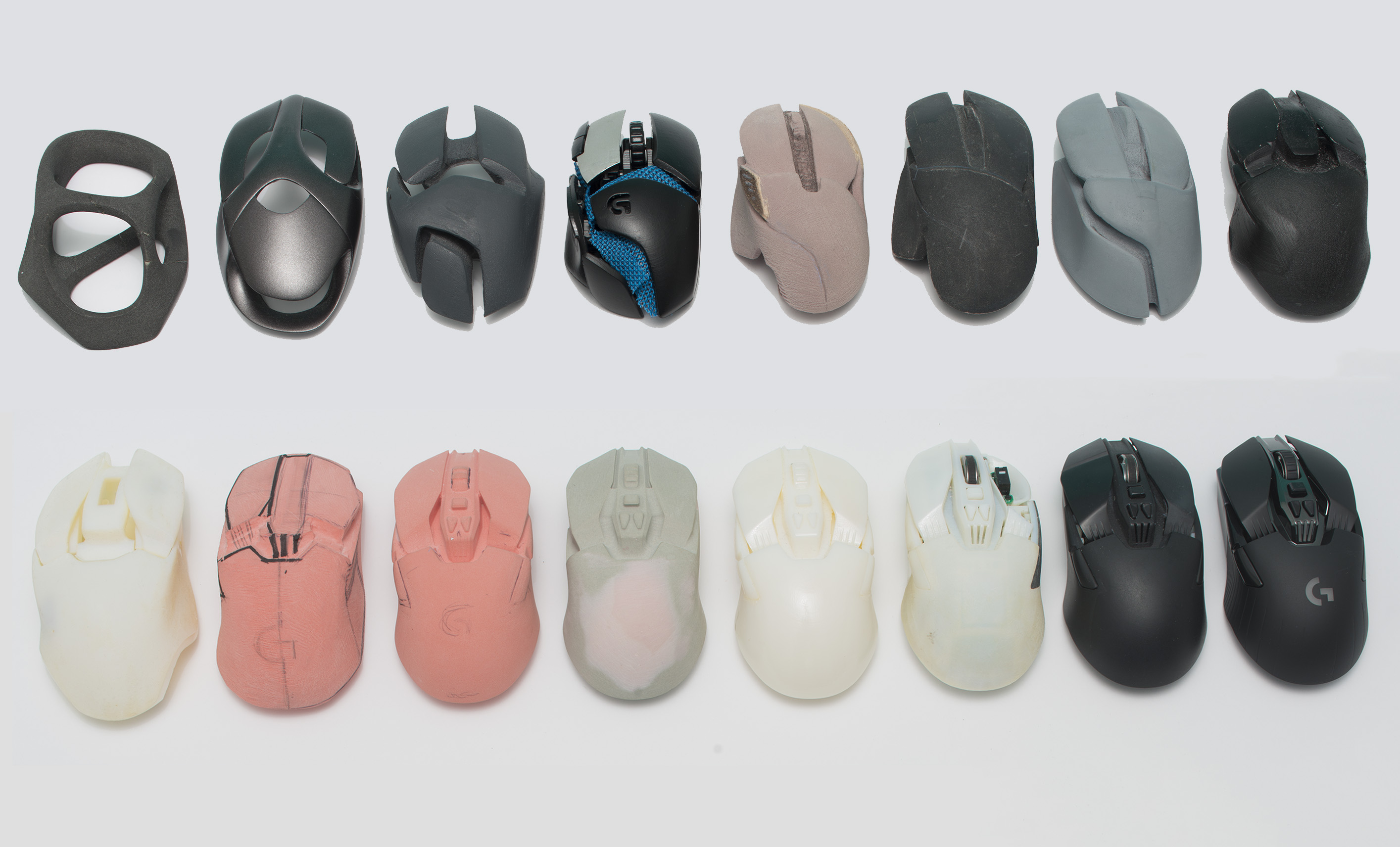
At this point, shortly after making and testing a range of physical models, Logitech made the call to head down a symmetrical path. But the shape was still far from settled.
“We start making things that don't look like mice but are indicative of what the curvature of this button could be, what the scroll wheel could feel like,” Pate said. “They call them 'monsters' during the development process, even early on during the initial exploration. We do exploration, and then there's a detailed design phase, the transition from design 3D files to mechanical 3D files where we take what the designers output to what the mechanical engineers need.”
This is where a whole new set of considerations come into play. It’s one thing to design the mouse, how it should look and feel, but it’s up to the mechanical engineers to consider everything from materials and structural integrity to weight and functionality.
Carry that weight
“Normally from the designers you get maybe 25 hand models,” said Logitech Gaming’s principal mechanical design engineer Niall White, when we talked at the mouse maker’s headquarters in Lausanne, Switzerland. “We bring [the designs] into 3D and try to understand if the electronics fit, can we make the keyplate work, basic feasibility, to understand if there's any problems. We look at tooling, decoration, assembly, just to make sure whatever a concept is, it's possible, and if it's not, how we make it possible.”
White’s accent is a dead giveaway that he works out of Logitech’s office in Cork, Ireland with the rest of the mechanical engineering team, which had to take those hand models and refine them to the final shape of the G900. Testing plays a huge role here.
“Five years ago we started [user experience testing] but didn't know how to do it properly,” White said. “Now we spend a huge portion of our time doing UX testing with fully functional prototypes. We do quick tests that are maybe 10, 15 minutes. Is this button in the right place? The right size? But we've also started doing prolonged testing. We try to get a unit out to maybe 10, 20 users to use for a week. That's what makes a difference.”
The Cork team includes psychologist Dr. Noirin Curran, who knows how to analyze reams of user feedback and turn it into valuable data. User experience testing helps the engineering team hone in on a comfortable shape for the mouse, but that’s only a part of their role. On the G900, White and the other engineers had to find a way to reduce the mouse’s weight as much as possible.
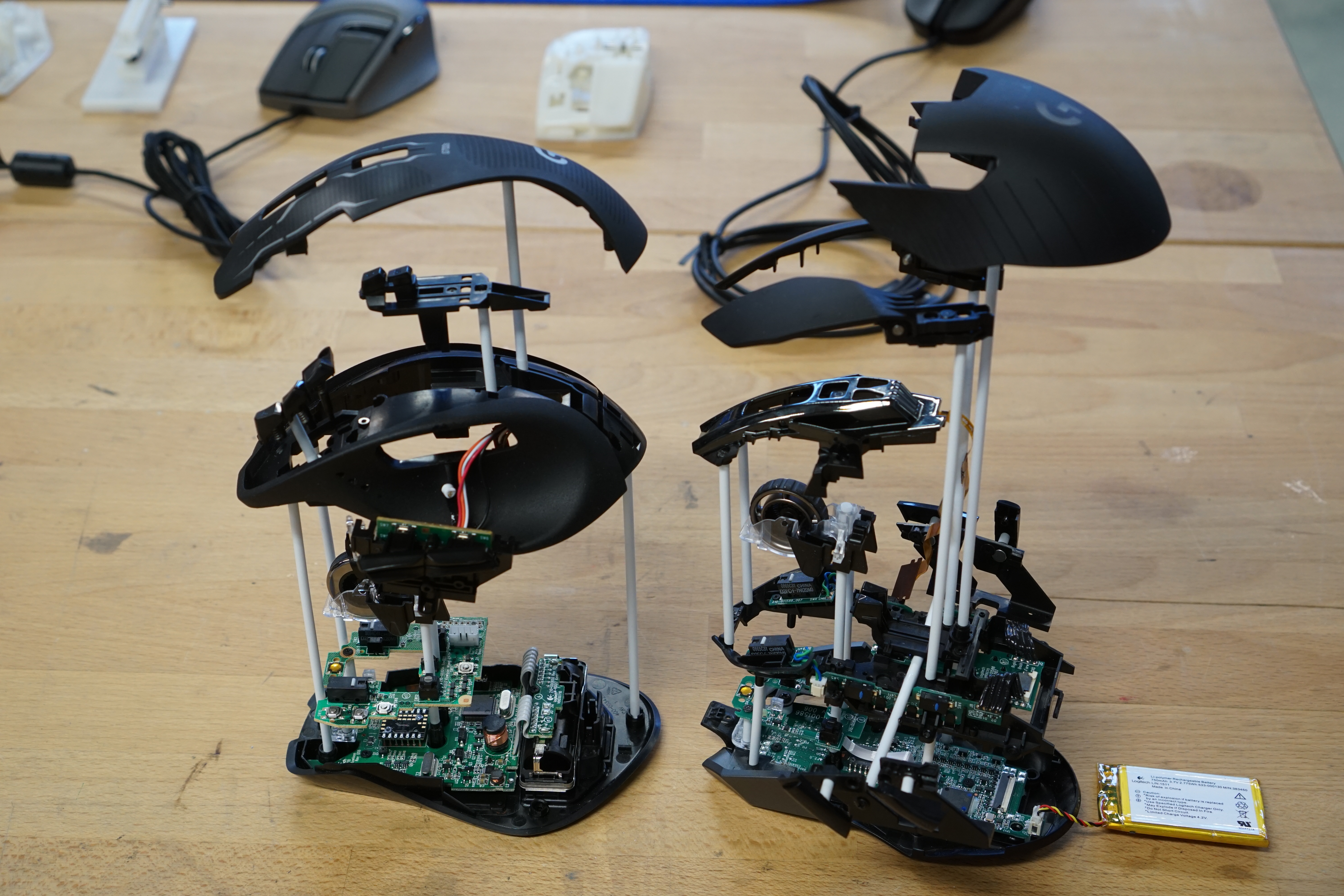
“We looked at everything. Plastic parts, electronic parts, every single detail of how it's made, what's used to make it. There's no sacred cow I guess, nothing that you can't afford to lose some weight somewhere. At the same time, you can't do it at the expense of the product.”
White’s team ended up developing the mouse equivalent of a kale juice diet—the plastic shell is built with a new thin-wall plastic molding technique that remains durable at a mere 1.2mm, much thinner than the plastic in Logitech’s previous mice. The first prototypes were too flimsy—”you pick it up and it’s like paper,” White demonstrated—so they added a structural chassis inside the mouse to serve as a base. It adds support and rigidity, while the thin wall molding still keeps overall weight down.
Design engineer Kevin Forde’s baby in the G900 project was a new metal pivot hinge for the left- and right-click. “In a typical plastic hinge design, you're deforming or bending plastic to press a switch,” Forde explained.
If you disassemble most mice, you’ll notice the left-and right-click buttons aren’t separate components, but simply part of the top shell of the mouse. With that design, you can see significant variation force it takes to press a switch between units that roll off the assembly line—as much as 10%, according to Forde’s testing. Even if both buttons on your mouse use the exact same switch, there’s a good chance they require different amounts of force to trigger. It can also take varying amounts of force to register a click depending on where you press. “We’ve removed that inconsistency completely,” Forde said.
“We’ve actually made the key a lot stiffer, so this reduces the deformation and bending of the plastic,” Forde said. “We have a metal pivot bar and this finely tuned pre-travel spring. It’s tuned to provide the right amount of force for the key to press against the strip so you don’t have too much pre-load. If you have too much, that’s bad, because you can get accidental clicks.”
The resulting button design gives the G900 a pair of praying mantis claws arcing forward, with a cavernous gap between the mouse’s palm hump and the button hinges. That gap looks like it would pinch the hell out of your hand, but you never touch that space, and leaving it empty saves precious grams.
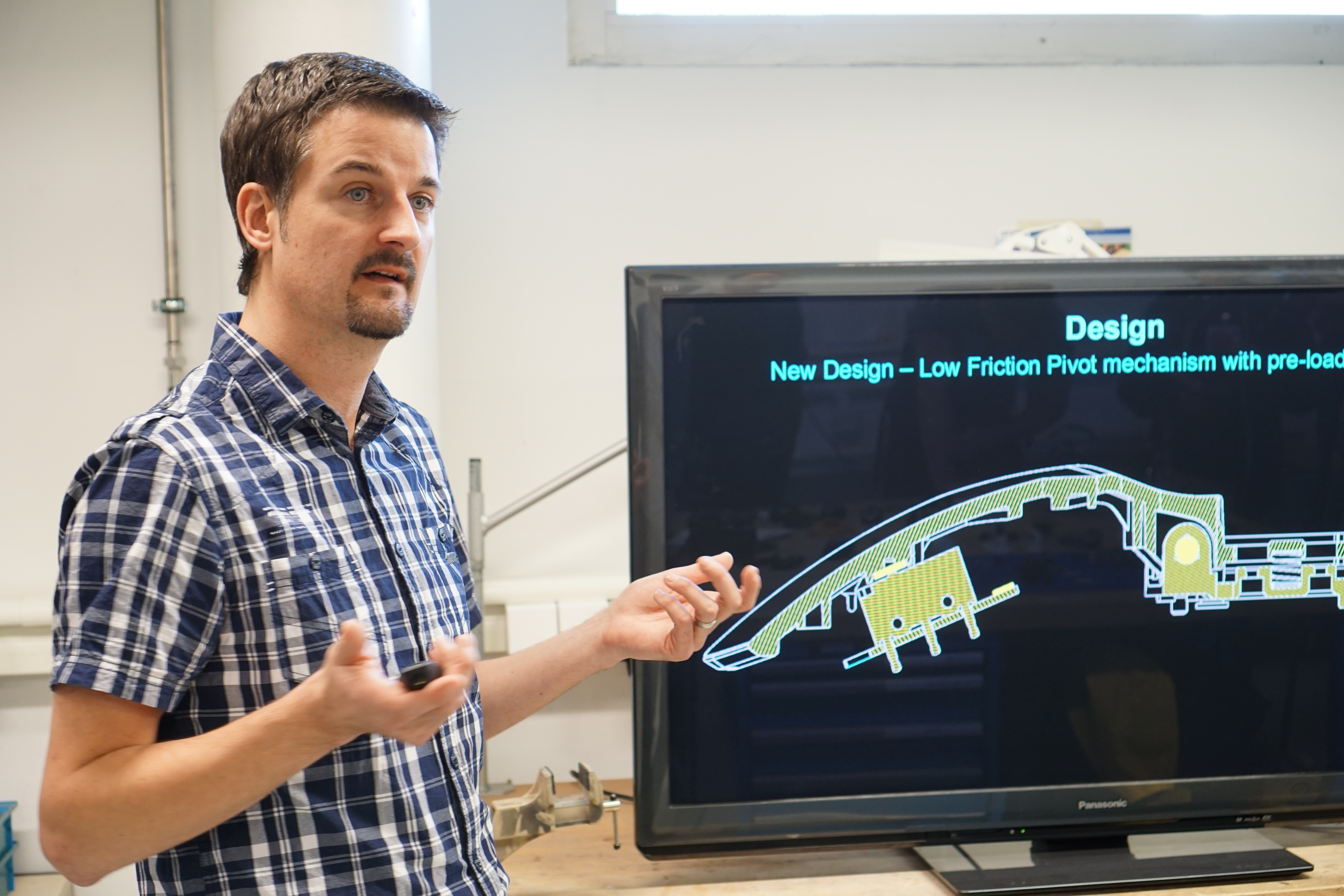
The right sensor for the job
Logitech is unsurprisingly sticking with its popular and precise 12,000 DPI sensor, the PMW-3366, in the G900. What is surprising, however, is that that sensor wasn’t designed specifically for the G502 mouse that debuted in late 2014. The G900 has been in development for so long, Logitech included considerations for wireless performance when it designed the spec for the PMW-3366.
“We had cordless in mind since 2010 for gaming,” said Francois Morier, head of sensor design at Logitech. “When we designed the sensor, we had in mind that we wanted it to be cordless. So we understand that we have to be power-frugal, in a way. We cannot waste power in every direction. So we made observations on the first generation cordless sensor we made ... we say we'll improve this point, this point, but we didn't want to waste any kind of power on items that were already good enough. The goal was really to understand what makes sense to be improved, that this would be observable, something that the user needs, and what is just putting a higher number on the box, which is just stupid.”
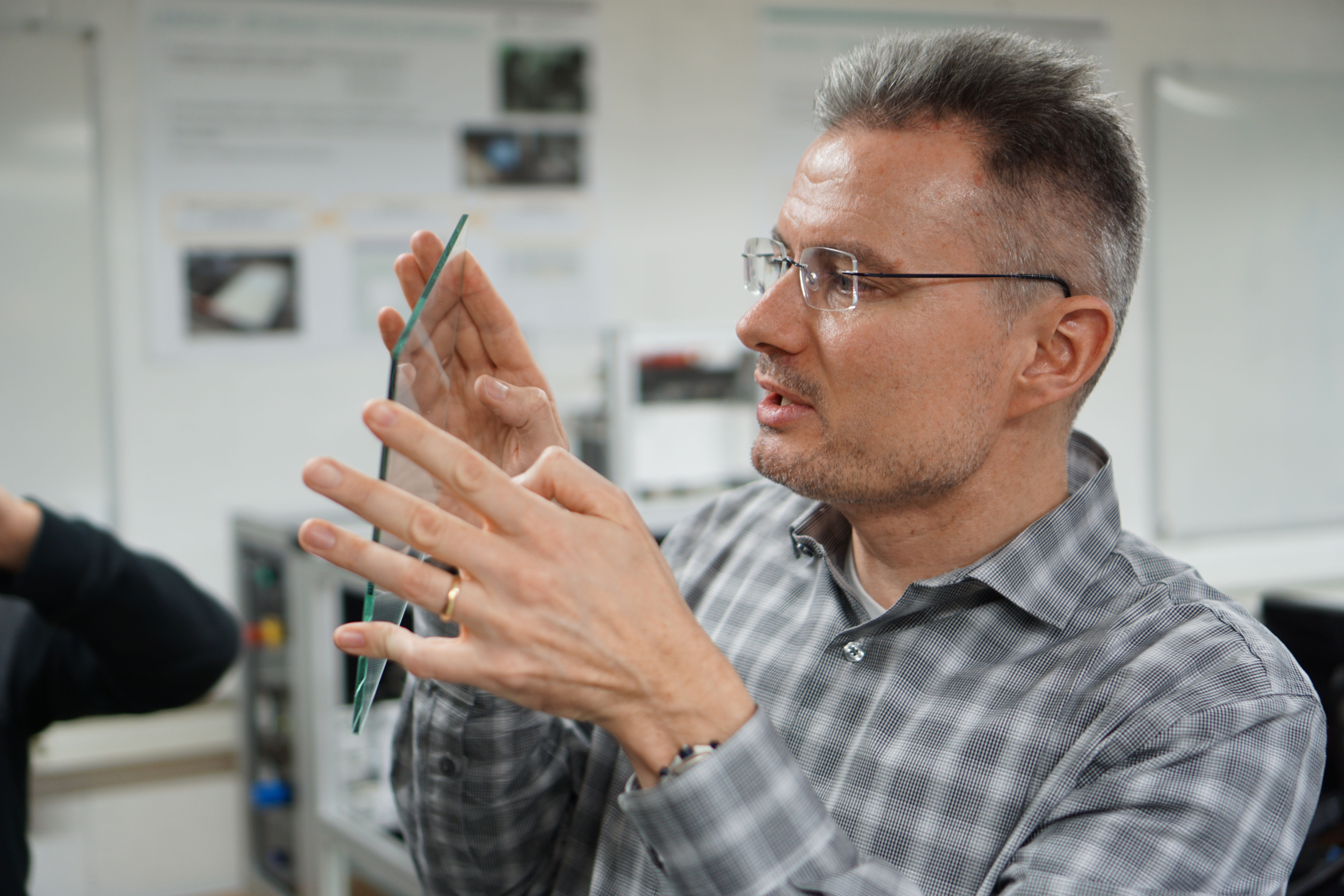
A common practice in gaming mice is pushing a sensor to support higher DPIs than it was originally designed for. New gaming mice proudly emblazon higher DPIs on the box than the previous year’s model, but the sensor’s performance will often degrade at those higher settings. While some mouse companies like Logitech will set the specifications they want the sensor manufacturer to deliver (Pixart is the big name, and the maker of the PMW-3366), others will go for an off-the-shelf solution. Factor in custom firmware, and two mice with the same sensor aren’t guaranteed to actually deliver the same performance. This is a vital part of mouse design consumers have little insight into.
Bringing it all together
There’s constant collaboration between teams on a project like G900, fighting for features, and ultimately making compromises. “A good antenna design, good RF design, implies a lot of compromises from all the other teams,” said electrical engineer Christian Castellaro. “Mechanical engineer guys, electrical engineer guys. We really have to work together to design the best RF performance and this involves everybody in the project. It has impact on the design, the mechanical, everything.”
Designing a wireless mouse means arranging the components around the antenna to prevent interference. Ideally, the antenna is placed near the front of the mouse, closer to where most people will place the receiver. But space at the front of the mouse is precious--the buttons and wheel have to fit there, too. The battery can also interfere with signals.
Thanks to the PMW-3366 sensor’s efficiency, Logitech could use a small rechargeable battery about 4mm thick, and they designed the interior of the G900 with the battery raised above the antenna on a separate plane to keep it out of the way.
As all of these components finally come together through months of iteration, the mechanical engineers like Niall White work closely with the production engineers at Logitech’s factory in China to prepare the mouse for the assembly line. Engineers in the factory take 3D files and develop the tools required to produce the mouse in bulk.
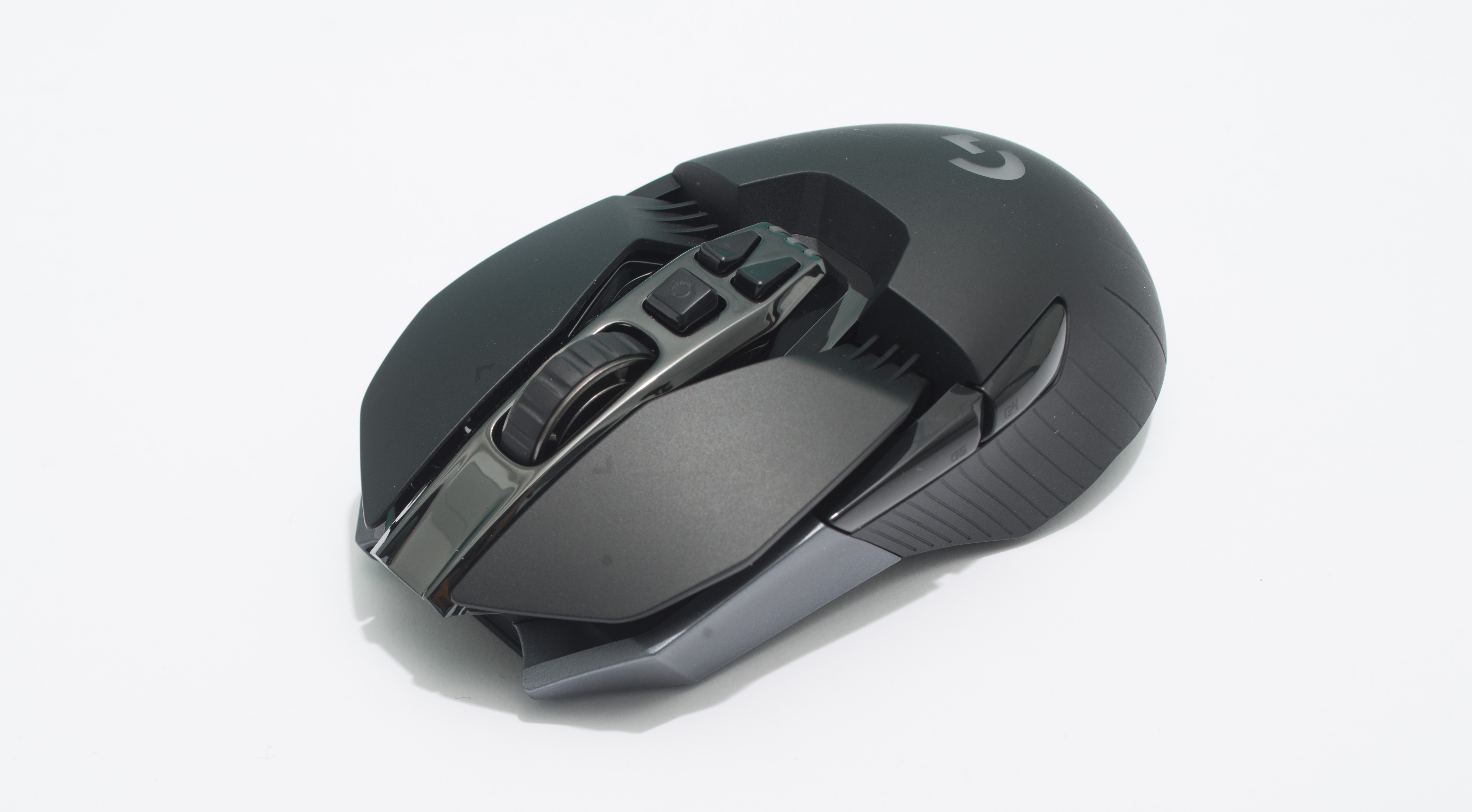
“If you go back to how we worked in China 10 years ago, probably you didn't get many parts that were actually in spec,” White said. “Sure, it would've functioned, but you could put 10 units on the table and they'd all be slightly different. That doesn't happen anymore. The systems we have in place now, every critical feature is dimensioned, measured, and we define how we measure it.” Defining exactly how a component is measured is crucial, since even a difference as small as .03 millimeters can cause problems, especially with the G900’s thin wall molding.
Finally, three years after the G900 started as a series of aspirational drawings, the finished mice roll off the assembly line. The work really doesn’t stop there--someone has to design the packaging, and a whole other team works on the software side--but that’s how a mouse is born. By the time we get it in our hands, the designers and engineers are already trying to make something better. Maybe we’ll hear about it in a year or two.

Wes has been covering games and hardware for more than 10 years, first at tech sites like The Wirecutter and Tested before joining the PC Gamer team in 2014. Wes plays a little bit of everything, but he'll always jump at the chance to cover emulation and Japanese games.
When he's not obsessively optimizing and re-optimizing a tangle of conveyor belts in Satisfactory (it's really becoming a problem), he's probably playing a 20-year-old Final Fantasy or some opaque ASCII roguelike. With a focus on writing and editing features, he seeks out personal stories and in-depth histories from the corners of PC gaming and its niche communities. 50% pizza by volume (deep dish, to be specific).

